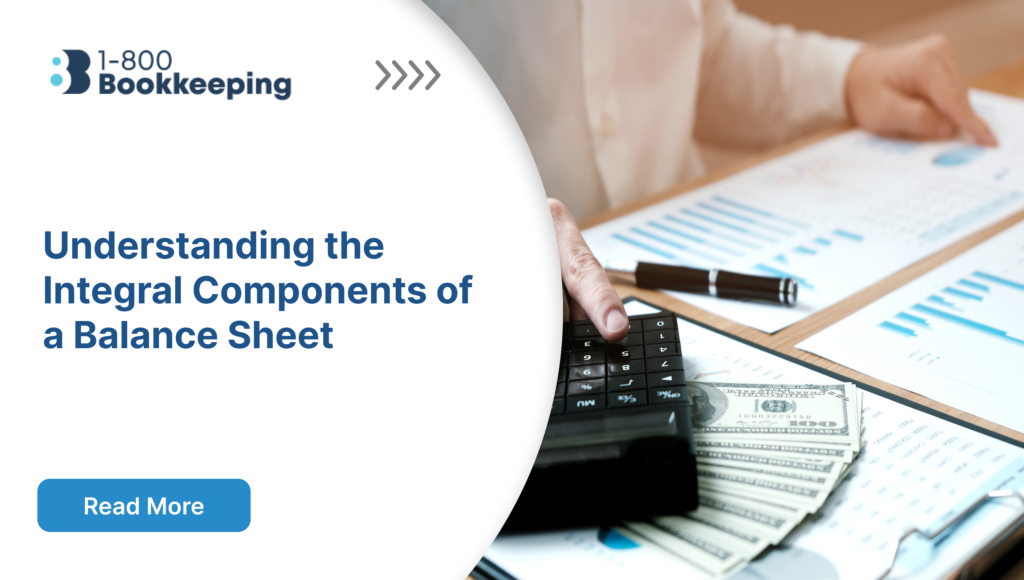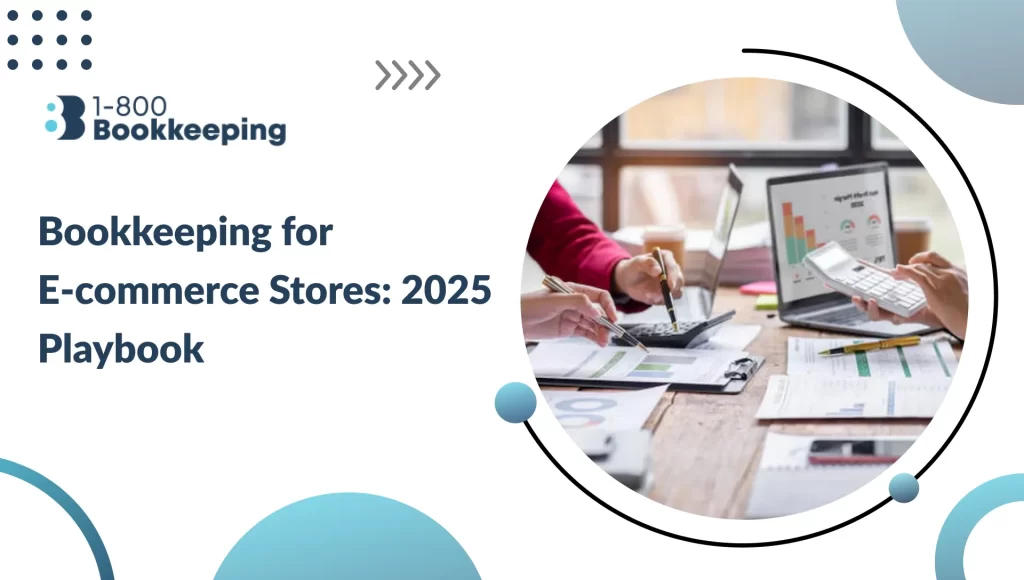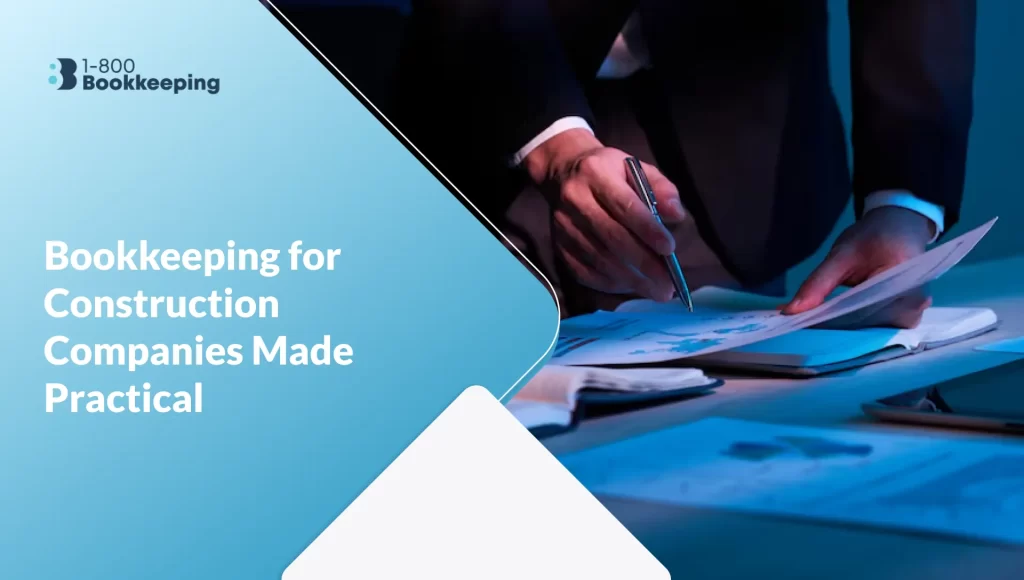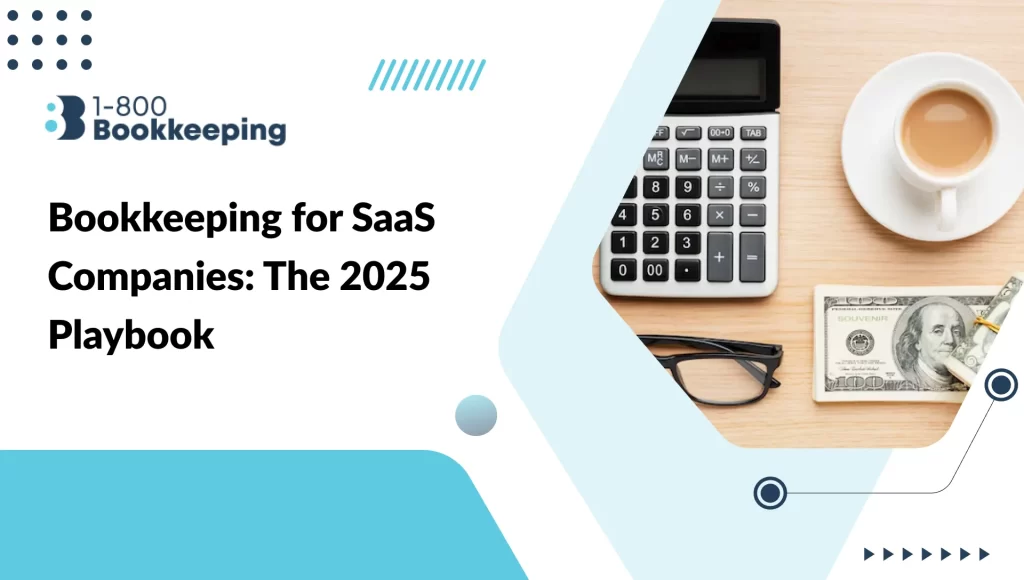The balance sheet, one of the fundamental financial statements, acts as an economic snapshot of a company at a specific time. It provides invaluable insights into a company’s financial health and aids stakeholders in making informed decisions. In this blog, we’ll delve into the composition of the balance sheet and guide you through creating one for your business or analyzing another company’s financial standing.
What is the Balance Sheet?
A balance sheet is a financial statement that outlines a company’s assets, liabilities, and shareholders’ equity at a specific period. This reflection of the company’s balance sheet equation (Assets = Liabilities + Shareholders’ Equity) offers a holistic view of what the company owns and owes. By examining the balance sheet, investors and analysts can gauge a company’s capital structure and understand how it finances its operations.
Streamline Your Financial Success with 1800Bookkeeping
Unlock the full potential of your balance sheet with 1800Bookkeeping’s expert services. Ensure pinpoint accuracy, gain invaluable financial insights, and say goodbye to accounting woes while focusing on scaling your business to new heights—partner with us for tailored, cutting-edge bookkeeping that drives growth and fosters stakeholder confidence. Elevate your financial reporting today with 1800Bookkeeping—where your balance is our business!
The Pivotal Role of the Balance Sheet in Business Health Analysis
In the realm of financial analysis and corporate planning, the balance sheet is an indispensable tool. This comprehensive financial statement is a testament to the company’s financial fortitude at a specific juncture. With its unique capacity to encapsulate a business’s assets, liabilities, and shareholders’ equity in a straightforward format, the balance sheet is integral to evaluating a company’s current standing and long-term prospects.
Assessing Liquidity and Solvency
The balance sheet is instrumental in determining a business’s liquidity – its ability to meet short-term obligations and operate smoothly. By scrutinizing the balance of current assets against current liabilities, stakeholders can ascertain whether a company possesses adequate resources to cover its immediate and near-term debts. This critical assessment ensures the business can sustain operations without facing cash flow crises.
Similarly, the balance sheet provides insights into a company’s solvency, that is, its capacity to meet long-term obligations. Solvency reflects an entity’s long-term financial sustainability and ability to persist through fluctuating economic climates. A snapshot of long-term assets juxtaposed with long-term liabilities offers a clear view of whether a company is overleveraged or has a healthy debt balance.
Gauging Financial Robustness
The overall financial robustness of an organization can be determined from the balance sheet’s rich tapestry of data. This includes the amount of capital retained within the business, the value of tangible and intangible assets, and the proportion of liabilities to equity. A robust balance sheet typically features strong equity positions, healthy retained earnings, and manageable liabilities, contributing to an entity’s financial resilience.
Tracking Company Growth and Efficiency
One can discern a company’s growth trajectory through the comparative analysis of balance sheets from multiple reporting periods. A consistent asset and shareholder equity increase suggests a positive growth pattern, whereas swelling liabilities might indicate potential risks. Additionally, the efficiency of asset utilization—a measure of how well a company uses its assets to generate revenue—can be deduced. This metric is of particular significance as it highlights the effectiveness of management’s strategies in deploying resources to drive profitability.
Dissecting the Balance Sheet: A Breakdown of Its Core Components
A balance sheet is a pivotal financial statement that outlines a company’s financial position at a particular moment, offering a detailed breakdown of its assets, liabilities, and shareholders’ equity. These components are categorized and analyzed to provide a clear picture of the company’s financial health and stability. Understanding the five main parts of a balance sheet is essential for anyone looking to grasp a company’s financial standing or attempting to create a balance sheet for their own business.
1. Current Assets
Current assets are the lifeblood of a business’s daily and short-term operations. These assets are expected to be converted into cash or used up within one year. They include:
- Cash and cash equivalents: This covers physical currency, bank accounts, and money market funds that can be accessed on demand.
- Accounts receivable are funds owed to the company by customers from sales on credit that are expected to be collected within the year.
- Inventory: Goods and materials held by a company for sale or production.
For small businesses, in particular, the efficient management of current assets, such as inventory and accounts receivable, is fundamental to preserving liquidity. Liquidity measures the ease with which a company can pay off its immediate and short-term obligations without selling off long-term assets.
2. Fixed Assets
Fixed or long-term assets are vital for a company’s core operations, providing the necessary tools and infrastructure for a business to function and generate income over multiple years. They include:
- Property, Plant, and Equipment (PP&E): Tangible assets such as buildings, machinery, vehicles, and equipment used in production or office functions.
- Non-current assets: These can be intangible assets like patents, copyrights, and trademarks, as well as long-term investments that cannot be converted into cash within the year.
Fixed assets are not intended for immediate sale but are used to produce goods and services, and their value depreciates over time. These assets are foundational for a company’s long-term strategy and operational capacity.
3. Current Liabilities
Current liabilities constitute a company’s debts or financial obligations due within one year. This category includes:
- Accounts payable: Money a company owes to suppliers or service providers.
- Current portion of long-term debt: The part of a company’s long-term debt due within the current year.
- Other short-term borrowings include loans, credit lines, and other financial obligations requiring payment within the year.
Managing current liabilities is essential for maintaining the company’s solvency and preventing its default on short-term debts.
4. Long-term Liabilities
Long-term liabilities are debts or obligations that are due after one year. They are an essential element of a company’s long-term financing strategies and include:
- Long-term debt: Loans and other borrowings not due within the current year.
- Bonds payable: Long-term bonds issued to investors that the company must repay at a future date.
- Long-term lease obligations: Payments for using property or equipment that extend beyond the year.
These liabilities provide crucial insights into the company’s future cash outflows and strategy for leveraging long-term debt.
5. Shareholders’ Equity
Often referred to as a company’s net worth, shareholders’ equity is the residual interest in a company’s assets after all liabilities have been deducted. It includes:
- Share capital: The funds the company raises through issuing shares.
- Retained earnings: Profits reinvested in the company rather than distributed to shareholders as dividends.
- Accumulated other comprehensive income: Earnings that have not been realized are not part of net income.
Shareholders’ equity indicates a company’s financial stability and long-term viability. The more equity a company has, the more cushion it has against economic downturns.
Crafting a Balance Sheet: A Comprehensive Guide for Financial Reporting
The balance sheet is a financial statement that reflects a company’s financial position at a specific moment, revealing what it owns and owes. Creating a balance sheet is a fundamental process in financial reporting, crucial for businesses of all sizes.
Creating a balance sheet involves a systematic approach to gathering financial data, categorizing assets and liabilities, and ensuring that these figures balance according to the accounting equation (Assets = Liabilities + Shareholders’ Equity).
1. Determine the period you’re reporting on.
A balance sheet differs from other financial statements in that it captures financial information as of a specific date, not over a period. The chosen date is typically the end of a fiscal quarter or year. It is essential to provide a snapshot of the company’s financial health comparable to other periods.
2. Identify your assets as of your reporting date.
Assets are everything a company owns that has value. When preparing a balance sheet, you’ll need to itemize and categorize all assets into current and fixed assets:
- Current assets: These are expected to be liquidated or used within one year, including cash and cash equivalents (like Treasury bills), accounts receivable (money owed to you by customers), inventory, and short-term investments.
- Fixed assets: Non-current assets include long-term investments such as real estate and equipment and intangible assets like patents and trademarks. They are vital for long-term operational needs and are not usually converted into cash within a year.
Careful documentation and valuation of assets are critical to accurately reflect the company’s capacity to generate future cash flows.
3. Identify your liabilities as of your reporting date.
Liabilities represent the debts and obligations a company is responsible for. Similar to assets, they are divided into categories:
- Current liabilities: These are obligations due within the coming year, including accounts payable (money you owe to suppliers or vendors), short-term loans, the current portion of long-term debt, and other short-term financial responsibilities.
- Long-term liabilities: These consist of financial obligations that extend beyond one year, such as mortgages, bonds payable, and long-term loans.
Accurate reporting of liabilities is necessary to understand the company’s financial commitments and ability to meet them with current and future earnings.
4. Calculate shareholders’ equity.
Shareholders’ equity, or owners’ equity or net worth, remains after all liabilities are subtracted from total assets. This section includes:
- Share capital: The money received from the issuance of shares.
- Retained earnings are profits the company keeps to reinvest in business operations or pay down debt rather than distribute to shareholders.
Calculating shareholders’ equity is fundamental to determining the value of a company that is attributable to shareholders.
5. Compare total assets against liabilities and equity.
Every balance sheet must adhere to the basic accounting principle where the total assets must equal the sum of total liabilities and shareholders’ equity. This comparison is a safeguard to ensure that your balance sheet adheres to the double-entry accounting system, where every entry to an asset account requires a corresponding entry to a liability or equity account.
Assets = Liabilities + Shareholders’ Equity
If these sides do not balance, it indicates discrepancies that must be investigated and corrected.
Conclusion:
Understanding the components of a balance sheet is crucial for evaluating a company’s financial health and making informed decisions. The balance sheet provides valuable insights into a company’s operations, from assessing liquidity and solvency to gauging financial robustness and tracking growth. By dissecting its core components and following best practices for financial reporting, stakeholders can comprehensively understand a company’s financial standing.
Feeling Overwhelmed by Bookkeeping? We Can Help.
Running a business is demanding, and keeping track of your finances can be a never-ending chore. Many business owners need help with the complexities of bookkeeping and payroll management, which can leave them frustrated and behind.
1800 Bookkeeping offers expert services to streamline your financial processes and empower you to make informed decisions.
Our team of seasoned professionals understands the unique challenges businesses of all sizes face. We can help you:
- Free Up Valuable Time: Offload your bookkeeping tasks to our dedicated professionals.
- Gain Peace of Mind: Ensure your financial records are accurate and up-to-date.
- Make Smarter Decisions: Get actionable insights into your business performance through clear and concise reports.
- Feel Confident: Make informed financial decisions based on reliable data.
Don’t let bookkeeping hold you back from achieving your business goals. Contact 1800 Bookkeeping today for affordable bookkeeping solutions.
FAQs:
1. What is a balance sheet, and why is it important?
A balance sheet is a financial statement that provides a snapshot of a company’s financial position at a specific time. It outlines a company’s assets, liabilities, and shareholders’ equity, offering valuable insights into its financial health and operational efficiency.
2. What role does the balance sheet play in financial analysis?
The balance sheet is essential for financial analysis as it helps stakeholders assess a company’s liquidity, solvency, economic robustness, and growth trajectory. Analysts can make informed decisions about investments, creditworthiness, and strategic planning by examining its components.
3. What are the main components of a balance sheet?
The main components of a balance sheet include current assets, fixed assets, current liabilities, long-term liabilities, and shareholders’ equity. Each category provides essential information about a company’s financial resources, obligations, and ownership structure.
4. How do you create a balance sheet for financial reporting?
To create a balance sheet, determine the reporting period, identify assets and liabilities as of the reporting date, calculate shareholders’ equity, and ensure that total assets equal the sum of liabilities and equity. A systematic approach to accurately gathering and categorizing financial data is critical to creating a comprehensive balance sheet.
5. Why is it important for assets to equal liabilities plus equity on a balance sheet?
Assets must equal liabilities plus equity on a balance sheet to adhere to the basic accounting principle of double-entry accounting. This principle ensures that every financial transaction has an equal and opposite effect on both sides of the balance sheet, maintaining the integrity of financial reporting and the accuracy of financial statements.





